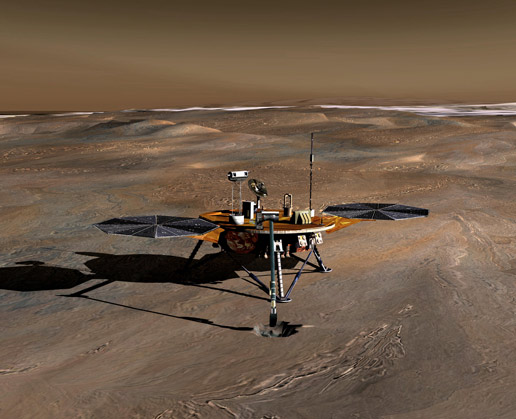Missions to Mars: Phoenix
Clouds and snow on Mars
BIRA-IASB developed a detailed microphysical model for Mars water ice clouds, based upon a model for terrestrial ice clouds. This Mars cloud model has been successfully applied for the interpretation of the measurements of water ice clouds and precipitation by the Mars Phoenix lander.
The Canadian lidar instrument on Phoenix, lead by prof. Jim Whiteway of York University, had discovered snow falling on Mars. These were the first direct measurements of this phenomenon on another planet.

The BIRA-IASB model calculated the sizes of the falling snow crystals. The surprising result was that these particles were much larger than any ice particles observed or simulated before on Mars (50 µm), and that they are very comparable to ice crystals in precipitation on Earth. Also the low-altitude clouds measured by Phoenix, and simulated by the model, are very comparable to terrestrial cirrus clouds, they also form in very similar conditions of temperature and humidity.
|